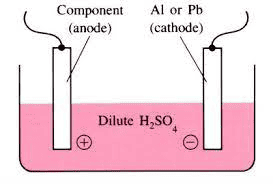Hard Anodising is one of the most well-known manufacturing processes in the world. Its name was derived from the application of a layer of hardening on the surface of steel which could protect it from corrosion (rust) by wearing down the surface to a bare minimum. It became a popular method for producing armour for both modern war machines and also for the building of machinery whose main function is to an extent, is to take care or protect the working part. The main types of armour are rivets, plates, blocks and plates. In order to produce any type of armour, hard anodising is a vital process and without it, any product would be completely useless in combat situations.

A hard anodise coating generally consists of two layers. The first layer is the oxidised layer which has either a sulphur or ferric oxide layer. The second layer is generally a colourless or transparent layer of PVC which is then sandwiched between the two layers of iron or steel. This is how it forms the hard anodized layer on any type of metal that is being used for making armour or even just for making parts for it. The Gloucester based company Poeton are perfect examples of how to get the work done.

The hard anodising process produces a very effective shield against corrosion and also provides good wear resistance. This is because the sulphur or ferric layer present in the coating combines very efficiently with the iron or steel to form a very impenetrable layer. Other benefits that this coating gives include the higher energy efficiency as well as lower cooling costs. This means that it is easier for the steel or iron to contain the heat during the process and as a result, it helps cut down on cool-down times during operations and also cuts down on carbon buildup. Hard anodizing is especially beneficial in areas where corrosion resistance is critical since there is no need to use sealing compounds or other types of protection like oil based lubricants.
